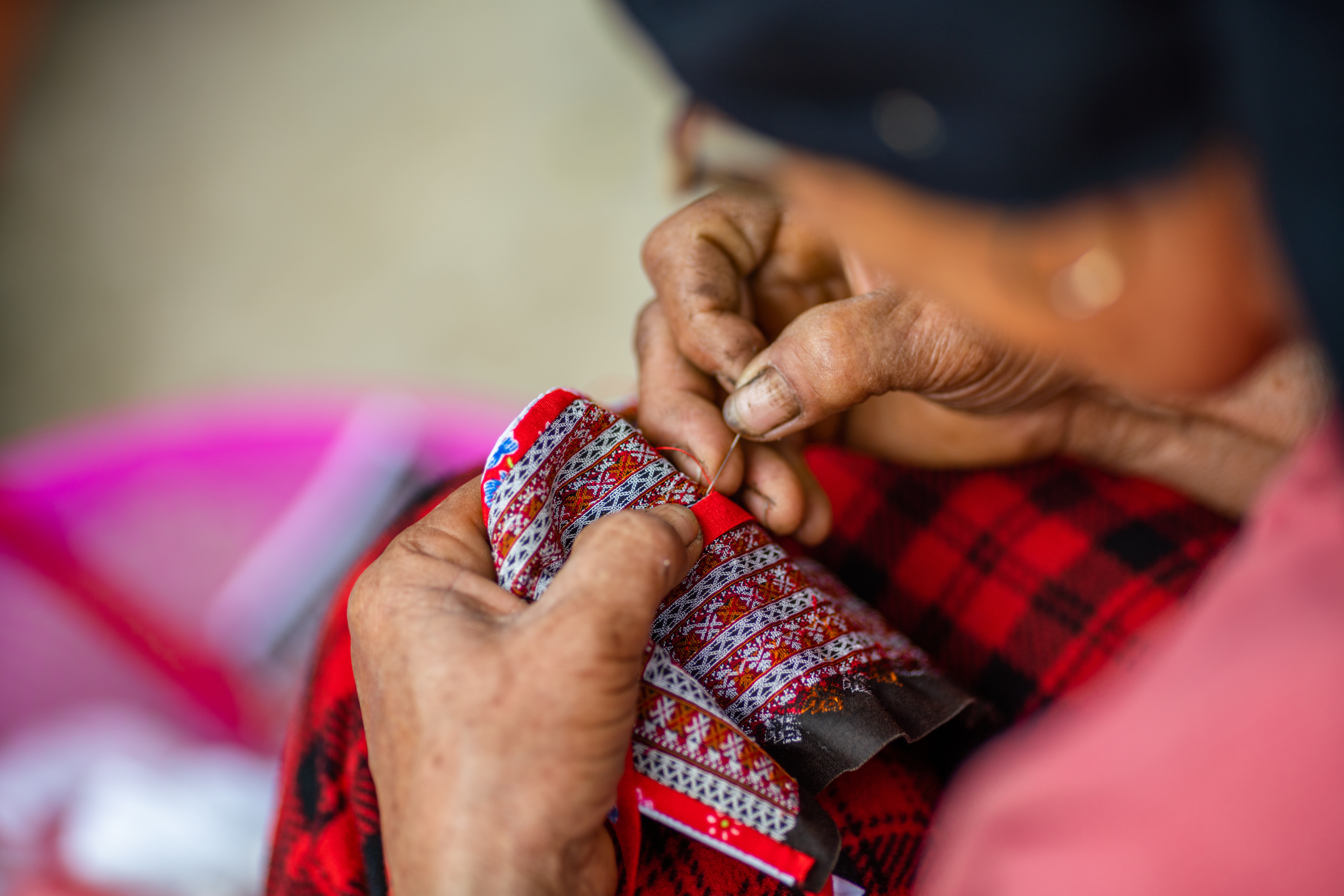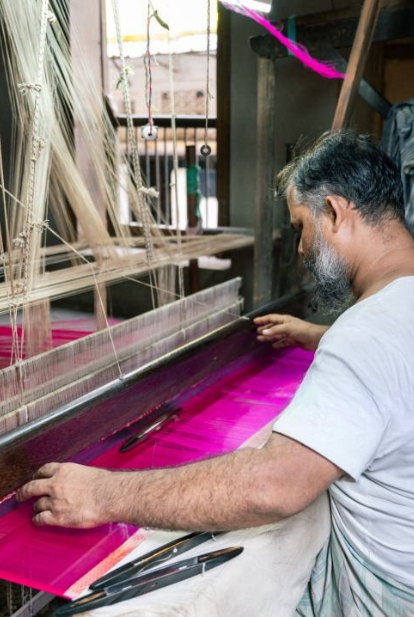Introduction
In a world fast waking up to the climate crisis, the fashion industry stands at a critical crossroads. Mass-produced, synthetic garments fill our wardrobes—but also our landfills. The antidote? Handloom textiles—India’s gift to sustainable fashion.
Handloom is not just fabric. It’s a philosophy. A slow, thoughtful, and ethical approach to fashion—rooted in heritage, handcraft, and harmony with nature. As fast fashion fades, handloom is stepping into the spotlight.
At Weavehand, we believe handloom is not the past—it’s the future. Here's why.
1. Eco-Friendly from Thread to Finish
Unlike powerloom or machine-made fabrics, handloom uses zero electricity. Every thread is manually woven, saving energy and reducing the carbon footprint.
-
No harmful emissions
-
Minimal water usage
-
Natural fibers like cotton, silk, banana yarn, and linen
-
Often dyed with plant-based or low-impact dyes
This makes handloom one of the most sustainable fabrics in the world.
2. Empowering Artisan Communities
Behind every handloom product is a skilled artisan—often from rural India, often a woman.
When you choose handloom:
-
You’re supporting local livelihoods
-
Helping preserve traditional weaving techniques
-
Contributing to women’s financial independence
“At Weavehand, we work with 500+ artisans across clusters—reviving forgotten arts like Bawan Buti and empowering the hands behind the weave.”
3. Timeless Over Trendy
Fast fashion comes and goes. Handloom stays.
Each piece is:
-
Uniquely crafted
-
Rooted in Indian heritage and design
-
Made to last longer, with better quality
By wearing handloom, you embrace slow fashion—a movement toward buying less, but buying better.
4. Biodegradable and Zero-Waste
Handloom fabrics are made of natural fibers, making them:
-
Biodegradable
-
Skin-friendly
-
Easily recyclable
Weavehand also ensures minimal wastage by enabling made-to-order and customized production, reducing dead stock and overproduction.
5. A Global Appeal, A Local Soul
From New York runways to Tokyo boutiques, Indian handloom is now being recognized globally for its elegance, sustainability, and story. Designers across the world are incorporating handwoven textiles in their collections.
At Weavehand, we’re blending traditional motifs with modern silhouettes, making handloom accessible, wearable, and lovable—from everyday sarees to international fashion collaborations.
6. The Future Lies in Conscious Choices
Consumers today are more aware than ever. They ask:
“Who made my clothes?”
“Is it ethical?”
“Is it sustainable?”
And handloom has the answers. With transparency, traceability, and tradition, it stands as the answer to fast fashion’s many problems.
Conclusion: Handloom is the New Luxury
Sustainable fashion is not just a trend—it’s a necessity. And in India, we already have the answer.
Handloom is heritage. Handloom is sustainable. Handloom is the future.
When you wear handloom, you wear a story, a purpose, and a planet-friendly promise.
Join Weavehand in this movement. Choose conscious. Choose craft. Choose handloom.



